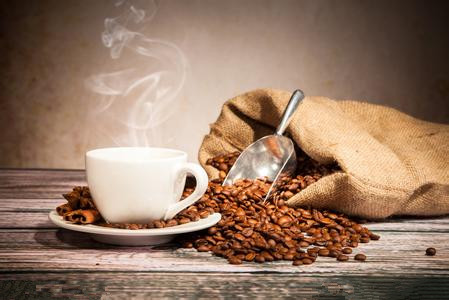Coffee beans travel boutique Coffee basic knowledge

The coffee we drink comes from the roasting and grinding of coffee beans, and all this is provided by magical coffee bars. The origin of this economic crop is in Yisuobi in Africa. It has been cultivated for more than 2000 years. At present, the main coffee producing areas in the world are Latin America, Africa and Africa. According to statistics, coffee is cultivated in 76 countries in the world, mainly in Africa and the United States. Chinese coffee was first introduced in Taiwan in 1884. In 1908, large-grain and medium-grain varieties of coffee were first introduced to Taiwan in 1908. At present, the main cultivation areas are in Hainan, Shaanxi, Guangxi and Hainan.
The first flowering period of the coffee bar is about three years. The white five-petal tube flowers are scattered with a faint scent of jasmine. The inflorescences are arranged in dense clusters and contain essential oils, which can be used as high-grade spices. Flowers wither after two or three days of blooming and begin to bear fruit in a few months. The fruit is a stone fruit, about 1.5 cm long, it is dark at first, then it is dark when it is ripe, and it is very similar to peach, so it is called peach coffee (Coffee Cherry) and can be harvested at this time.
The coffee fruit contains coffee beans, that is, coffee beans. There are raw beans and cooked beans. What we usually see are coffee beans, that is, beans that are roasted and fried in high fat.
Each raw coffee bean has the outer membrane of a cattail, which is called peel, and its outer coat is covered with a dark-colored outer skin, which is called endocarp. The whole coffee bean is wrapped in a sticky substance to form the pulp of the coffee, which is thick and sweet, and the outermost is exotic.
Climate is the decisive factor in coffee planting, and coffee coffee plants only grow together in the summer or winter, so it is most suitable to grow coffee in areas between the north and south of 25 degrees. This coffee producing place is generally referred to as "coffee shop" or "coffee area".
However, not all the land located in this area can produce good coffee shops. The ideal planting conditions for coffee bars are warm temperatures between 15 and 25 ℃, and the annual rainfall must reach 1500 to 2000 millimeters. At the same time, the rainfall should be in line with the blooming season of the coffee shop. Of course, in addition to the combination of seasonal seasons and rainfall, there should also be fertile soil. The most suitable soil for growing coffee is a well-drained, fertile soil containing pozzolanic ash.
In addition, daylight is of course an indispensable element for the growth and fruit of coffee, but strong sunlight will affect the growth of coffee coffee, so various producing areas usually cooperate with the planting of some shade plants, such as bananas, mangoes and legumes. The ideal altitude is 500-2000 meters. Therefore, the best coffee products are grown at an altitude of 8-1200 meters above sea level. It can be seen that the conditions of growing high-quality coffee, such as light, rainfall, soil, grain, as well as the way coffee beans are harvested and the production process, will affect the quality of the coffee itself.

Important Notice :
前街咖啡 FrontStreet Coffee has moved to new addredd:
FrontStreet Coffee Address: 315,Donghua East Road,GuangZhou
Tel:020 38364473
- Prev

Basic knowledge of Coffee History and Culture
Beginning with Penicia in 1615, coffee culture was spread throughout Europe. That strength, of course, set off friction everywhere. It also caused Islamic drinks to be brought to Christians in Rome, and there are two arguments about whether they agree or not. King Clement VIII of France at that time, although it was the devil's drink, it was so delicious. It's a pity to let this drink go to the pagan tea station. "because
- Next

Basic knowledge of Coffee Culture in Japan
The first coffee spread to Japan was Nagasaki in the Yuanlu period. And people officially accepted it from the Meiji era. Now let's take a look at the coffee history of Japan. At first, the Japanese were not used to the coffee shop opening one after another in Western Europe, when the literature and art of coffee culture were in full bloom, while Japan was in the strict lock-up policy of the Edo era.
Related
- How did the Salvadoran coffee industry develop in Central America?
- What exactly does the golden cup extraction of coffee mean?
- The Origin of Coffee flower
- [2023 Starbucks World Earth Day] there are more meaningful things besides free Starbucks coffee!
- What kind of coffee is there in Spain? 9 Flavors of Spanish Coffee
- Aromatic African coffee| Kenya's coffee culture and historical production area
- Liberica Coffee Bean knowledge: the characteristics of Liberian Coffee beans of the three original species of Coffee beans
- The origin and formula of Spanish latte introduces the taste characteristics of Bombon coffee in Valencia, Spain.
- How to adjust the solution of over-extracted coffee
- What is the tasting period of coffee beans? What is the period of coffee and beans? How should coffee wake up and raise beans?

